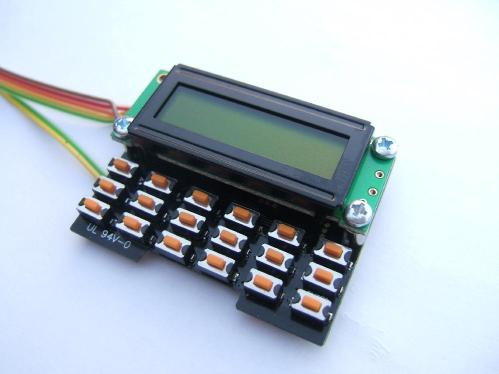Back in 1987 or so I got a Casio
CFX-400 scientific calculator watch, and I wore that watch to death for 10 years
until the band support on the case broke.
The CFX-400 was the best, and last scientific calculator watch ever sold. I loved that watch, it was the ultimate nerdy engineers accessory. Indeed, it is so sort after today that even broken ones can fetch many hundreds of dollars. And a pristine one in working condition? - if you have to ask the price, you can't afford it.
Yes, you can still buy calculator watches, but they are simple 4 function calculators. You have not been able to buy a scientific calculator watch for the last 20 years!
I've always wanted a new scientific, and since one didn't come along I got to thinking if it was possible to design and build my own. The circuitry was trivially simple of course, but the hard part was always going to be the physical construction, and almost certainly the multitude of custom parts that go along with it.
So the project sat in the too-hard basket for a few years until I stumbled upon a 53mm x 20mm compact 16x2 line LCD. I got one and sat it on my wrist, and it didn't look too big. Hey, this might be do-able I thought, and the project was resurrected.
I tried to find some sort of off-the-shelf case or jiffy box to fit the LCD, but nothing suited. So I got the idea to simply mount everything bare on a PCB. Not very elegant, but it would be good enough for a first prototype I figured. I didn't give the physical design much more thought, and I wanted something in my hands to visualise, so I simply jumped right in there and had this prototype hastily produced and doing calculations after about 30 hours of work:

The very first prototype (with hard wired programming cable)
It only had an 18 key keypad, but I figured that was OK as my old CFX-400 only had 16 + 4 side keys. All the extra functions were performed with a MENU key and two rows of 4 soft function buttons that mapped to the 8 keys directly below the LCD.
This one used surface mount keys, as I had a surface mount battery holder on the back at that point.
The hardest part was figuring out how to mount the watch band. In the end I went with 1mm PCB socket pins glued or soldered to the board, and standard watch spring bars. This has worked really well, and allows the watch to be usable without a case.
At this stage I didn't have much idea about how to do a front panel, and the back of the watch and the battery were totally exposed. But the watch worked, and it looked half-way decent.
I played around with many ideas for a case, but the more I worked on the second prototype, the more I got to thinking about how good and practical I could make this thing look without a case, and to do it all using off-the-shelf components. If anything, just for the challenge. Plus it would make the watch look much nerdier.
So after a lot of research I found an ideal size back casing for the battery, tweaked the PCB design to make it all come together, and added a front panel in the form of a 0.5mm PCB with black solder mask. I also squeezed on an extra column and a half row of keys, and added two right angle buttons to make it more watch-like. It now had 25 keys and this was ideal, as it allowed the basic keys like EXP, +/-, X-Y, STO and parentheses to be primary keys. So basic engineering functions could be performed without using the menu key.
The second prototype is the one you see presented here, and it looks fairly professional indeed! A trial wearing it for a few days had people asking me were I bought it, they thought it was a commercial watch. Even when I showed it to other engineers they were surprised I built it myself, and were even more surprised when they found out it used all off-the-shelf bits.

The band I used was from an old Victorinox Starlight watch, but it is designed to take any standard 20mm to 22mm watch band.